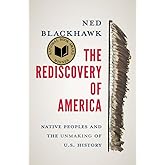
Enjoy fast, free delivery, exclusive deals, and award-winning movies & TV shows with Prime
Try Prime
and start saving today with fast, free delivery
Amazon Prime includes:
Fast, FREE Delivery is available to Prime members. To join, select "Try Amazon Prime and start saving today with Fast, FREE Delivery" below the Add to Cart button.
Amazon Prime members enjoy:- Cardmembers earn 5% Back at Amazon.com with a Prime Credit Card.
- Unlimited Free Two-Day Delivery
- Streaming of thousands of movies and TV shows with limited ads on Prime Video.
- A Kindle book to borrow for free each month - with no due dates
- Listen to over 2 million songs and hundreds of playlists
- Unlimited photo storage with anywhere access
Important: Your credit card will NOT be charged when you start your free trial or if you cancel during the trial period. If you're happy with Amazon Prime, do nothing. At the end of the free trial, your membership will automatically upgrade to a monthly membership.

Download the free Kindle app and start reading Kindle books instantly on your smartphone, tablet, or computer - no Kindle device required.
Read instantly on your browser with Kindle for Web.
Using your mobile phone camera - scan the code below and download the Kindle app.



 Audible sample
Audible sample Native Nations: A Millennium in North America Hardcover – April 9, 2024
Purchase options and add-ons
“A feat of both scholarship and storytelling.”—Claudio Saunt, author of Unworthy Republic
FINALIST FOR THE CUNDILL HISTORY PRIZE
Long before the colonization of North America, Indigenous Americans built diverse civilizations and adapted to a changing world in ways that reverberated globally. And, as award-winning historian Kathleen DuVal vividly recounts, when Europeans did arrive, no civilization came to a halt because of a few wandering explorers, even when the strangers came well armed.
A millennium ago, North American cities rivaled urban centers around the world in size. Then, following a period of climate change and instability, numerous smaller nations emerged, moving away from rather than toward urbanization. From this urban past, egalitarian government structures, diplomacy, and complex economies spread across North America. So, when Europeans showed up in the sixteenth century, they encountered societies they did not understand—those having developed differently from their own—and whose power they often underestimated.
For centuries afterward, Indigenous people maintained an upper hand and used Europeans in pursuit of their own interests. In Native Nations, we see how Mohawks closely controlled trade with the Dutch—and influenced global markets—and how Quapaws manipulated French colonists. Power dynamics shifted after the American Revolution, but Indigenous people continued to command much of the continent’s land and resources. Shawnee brothers Tecumseh and Tenskwatawa forged new alliances and encouraged a controversial new definition of Native identity to attempt to wall off U.S. ambitions. The Cherokees created institutions to assert their sovereignty on the global stage, and the Kiowas used their power in the west to regulate the passage of white settlers across their territory.
In this important addition to the growing tradition of North American history centered on Indigenous nations, Kathleen DuVal shows how the definitions of power and means of exerting it shifted over time, but the sovereignty and influence of Native peoples remained a constant—and will continue far into the future.
- Print length752 pages
- LanguageEnglish
- PublisherRandom House
- Publication dateApril 9, 2024
- Dimensions6.3 x 1.44 x 9.5 inches
- ISBN-100525511032
- ISBN-13978-0525511038
Frequently bought together

Customers who viewed this item also viewed
From the Publisher

|
|
|
|
|---|---|---|
|
|
|
|
Editorial Reviews
Review
“Both majestic in scope and intimate in tone. . . . No single volume can adequately depict the gamut of Indigenous cultures, but DuVal's comes close. . . . Native Nations belongs on the same shelf as Blackhawk's magisterial work and Charles Mann's 1491.”—Hamilton Cain, Minneapolis Star-Tribune
“Sweeping and important . . . [a] nuanced and satisfying overview of America’s Native past . . . It is hard to imagine a more learned and humane guide to the last thousand years of this story than DuVal.”—American Scholar
“This is, to put it simply, a magnificent book.”—Missouri Historical Review
“An indispensable guide to the epic history of Native North America.”—Caroline Dodds Pennock, author of On Savage Shores
“A revelatory account of the power and influence of Indigenous peoples in North America.”—Kirkus Reviews (starred review)
“prodigiously researched and enlightening.”—Publishers Weekly (starred review)
“Conducting us skillfully on this journey through a perilous history fraught with colonial violence, DuVal brings the reader finally to a hopeful and resurgent Native present.”—Nicole Eustace, Pulitzer Prize-winning author of Covered with Night
“An exemplary model of how Native American history should be written.”—Brooke M. Bauer, author of Becoming Catawba
“A page-turner . . . DuVal offers us a new chronology of early America.”—Anne F. Hyde, author of Born of Lakes and Plains
“Native Nations is a powerful story of Indigenous peoples’ continued survival, resistance, and strength. . . . Even the most expert reader is likely to learn something new.”—Warren Eugene Milteer, Jr., author of Beyond Slavery’s Shadow
“A stunning achievement.”—Sarah M. S. Pearsall, author of Polygamy: An Early American History
“A vital new history leading to today’s more than five hundred Native nations in the United States.”—Andrés Reséndez, author of The Other Slavery
“Native Nations provides a new way of understanding the long sweep of Native American history.”—Daniel K. Richter, author of Before the Revolution: America’s Ancient Pasts
“Sensible, lucid, and wide-ranging . . .”—Alan Taylor, author of American Republics: A Continental History, 1783–1850
“While much of the history written about Native American people has focused on white experiences . . . DuVal focuses on the growth and change of Indigenous polities and cultures.”—Anton Treuer, author of The Cultural Toolbox
About the Author
Excerpt. © Reprinted by permission. All rights reserved.
Ancient Cities in Arizona, Illinois, and Alabama
It is rare that everyone in the world has the same thing on their minds at once, but we know one thing that everyone was talking about in the spring of 1006: the star. It had always been in the sky, but now it was sixteen times as bright as the planet we call Venus. In some places it was visible during the day for an entire month and startlingly bright at night for several years. Scientists today say it was the brightest supernova ever recorded. A chronicler in Baghdad recorded that “its rays on the earth were like those of the Moon.” A Benedictine monk in Switzerland wrote that “a new star of unusual size appeared; it was glittering in appearance and dazzling the eyes, causing alarm.” Alarm was a common reaction. Egyptian scholar Ali ibn Ridwan wrote about wars and famines that followed the star’s appearance. Chinese astronomers worried about whether what they called “guest stars” were auspicious or, as the scholar Li Shunfeng put it, a sign that “presages military action, death, and countrywide famine.” Court astronomers worked to assure Emperor Zhenzong that, despite recent invasions, “it presages great prosperity to the state over which it appears.”
In our age of electric lights, it is hard to grasp how important the stars were to everyone before the twentieth century. People all around the world used the sky to keep track of time. They could see countless more stars than we can today, and many cultures believed that a change in the sky meant something significant was happening. When another supernova appeared in 1054, less than fifty years later, some people believed the skies were telling them to make a change. They moved to new places and adjusted their religious beliefs and practices. Leaders used the skies for guidance and sometimes pointed to them as evidence that people should follow whatever path they advised. The capital of the Ghana Empire fell to the Islamic Almoravids around the time of the 1054 supernova, and its call to change may have assisted in persuading Ghanaians to convert to Islam. Both the Normans and their English adversaries saw the appearance of Halley’s Comet in 1066 as presaging the Norman conquest of England; it is woven into the Bayeux Tapestry.
The people of North America watched the sky, too. Their calendars were based on changes in the moon and in the sun’s position relative to Earth. Archaeologists speculate that the second supernova, in 1054, inspired people who had lived in small farming towns in what’s now Illinois to tear one of them down and build Cahokia, a large and influential city that would set off a trend of grand civilizations called “Mississippian” that spread all across the Mississippi Valley and the American Southeast in the following centuries. Cahokians clearly saw the sky as important—near its central city was a huge outdoor calendar made of tall red cedar posts, carefully placed to mark solstices and equinoxes. Cahokia was just one of a constellation of city-states across the continent. Also around 1054, the already sprawling civilization of the Huhugam, in what’s now Arizona, began its greatest period of growth and centralization.
Around the world, a combination of portentous signs, agricultural expansion, and human decisions sparked the growth of cities. They became crossroads of economic and cultural exchange on a phenomenal scale. They grew and distributed food for thousands, even tens of thousands, of people; they were bursting with artists and craftworkers; and they had fighters capable of defending them and conquering surrounding territory. North America followed this global pattern, but Europeans and white Americans couldn’t square this urban past with their assumption that Indians were primitive and nomadic, people whose use and ownership of the land were so light that it really didn’t belong to them. By overlooking the continent’s history of powerful, sophisticated cities in this self-serving way, Europeans and their descendants would justify taking a continent. This chapter starts by looking at those myths at their height, in the late nineteenth century, and Native Americans’ attempts to correct those myths with their own historical and cultural memories. After that we’ll look at the realities of that ancient past in three places: Cahokia, the cities of the Huhugam, and Moundville, in present-day Alabama.
Myths
In the 1880s, William McAdams, a member of the St. Louis Academy of Science, stood in a cellar in southern Illinois looking for evidence that the huge earthen pyramids that dotted the Mississippi Valley were human-made. Only a few decades earlier, the United States had forced the Chickasaws from their homelands, yet by McAdams’s time, archaeologists puzzled over the places that the ancestors of Chickasaws and neighboring Native peoples had built. Indeed, after they removed Native Americans, nineteenth-century white Americans tried to forget they had ever been there at all. The aptly named Mr. and Mrs. Hill had built this house—and the cellar in which McAdams stood—on the highest place on their farm, the flat top of a pyramid ten stories above the prairie below. The walls of the cellar were black, carved out of rich soil that was easy to dig and fertile for the corn and pumpkins the Hills were growing on the flat surfaces of the multitiered hill. But interspersed in the black dirt of the walls here and there, McAdams could see patches of yellow clay and gray silty dirt. If these variations had been natural, they would have come in stratified layers, but these were patches, McAdams noted, “about such size as a man could easily carry.”
Humans had built this hill, one bucketful at a time. McAdams’s certainty grew when Mr. and Mrs. Hill showed him artifacts they had found on their property, including pottery and axes. Mr. Hill explained that he had dug a well starting at the top of the mound, deep into the soft soil. At the depth of sixty-five feet, he had pulled up broken pieces of pottery and decayed ears of corn, perhaps the lunch remains of an ancient worker building the hill up from the prairie’s surface.
McAdams was contributing to a vigorous late-nineteenth-century debate about the origins of hills like this one that people could see rising abruptly from the flatlands of the Midwest, the floodplains of the Southeast, and the deserts of the Southwest. A few years later, exploring the place that had become the city of Phoenix, anthropologist Frank Cushing was astounded to see “the remains of the most extensive ancient settlement we had yet seen, or I had ever dreamed would be possible for us to find within the limits of the United States,” a long series of flat-topped pyramids that “lay stretched out in seemingly endless succession,” with “the yellow, almost angular slopes of the great central temple-mound” above them. All across the United States, many of these mounds still exist today, after centuries of erosion, although most were destroyed to make room for new towns and cities that Americans built on Native American land.
McAdams had been drawn to the particularly dense ruins of a great Native city that archaeologists called Cahokia (after the Illinois-speaking Cahokia Indians living nearby in the eighteenth century). In his day, two hundred mounds rose up out of the tall prairie grass on both sides of the Mississippi River, so striking that one of St. Louis’s early nicknames was “Mound City.” McAdams and other scientists in the late nineteenth century were worried that the main city of Cahokia would be bulldozed before they had a chance to understand what they were—just as Cahokia’s outlying cities already had been leveled to make room for St. Louis and East St. Louis. Developers were putting pressure on landowners like the Hill family to sell so they could build steel mills at this place near the confluence of the Mississippi River and the Missouri, Ohio, and Illinois rivers, as much a crossroads of the continent then as it had been in Cahokia’s time.
Nineteenth- and early-twentieth-century geologists, though, argued that the mounds were natural occurrences, raised up by a deep glacier passing through in a previous millennium or carved out of bluffs by erosion. Many Americans found the geological explanation for the mounds easier to believe than the idea that Native Americans had built cities on a grand scale centuries before the founding of the United States. In the Southwest, because the great civilizations had elaborate irrigation systems apparent to the untrained eye and, in some places, towering stone and adobe buildings, it was harder to claim that there was no human design there. In fact, all across the continent, flat-topped pyramids like the one the Hills had built upon were human-made and once had palaces and temples on top and cities all around.
Product details
- Publisher : Random House (April 9, 2024)
- Language : English
- Hardcover : 752 pages
- ISBN-10 : 0525511032
- ISBN-13 : 978-0525511038
- Item Weight : 2.34 pounds
- Dimensions : 6.3 x 1.44 x 9.5 inches
- Best Sellers Rank: #31,736 in Books (See Top 100 in Books)
- Customer Reviews:
About the author

Kathleen DuVal is a professor of early American history at the University of North Carolina, Chapel Hill. She is the author of Independence Lost: Lives on the Edge of the American Revolution (2015), The Native Ground: Indians and Colonists in the Heart of the Continent (2006), and the forthcoming Native Nations: A Millennium in North America (2024). She is also co-editor of Interpreting a Continent: Voices from Early America (2009) and co-author of the textbook Give Me Liberty! She received her Ph.D. in American History from the University of California, Davis, in 2001. She lives with her family in Durham, North Carolina.
Customer reviews
- 5 star4 star3 star2 star1 star5 star75%21%4%0%0%75%
- 5 star4 star3 star2 star1 star4 star75%21%4%0%0%21%
- 5 star4 star3 star2 star1 star3 star75%21%4%0%0%4%
- 5 star4 star3 star2 star1 star2 star75%21%4%0%0%0%
- 5 star4 star3 star2 star1 star1 star75%21%4%0%0%0%
Customer Reviews, including Product Star Ratings help customers to learn more about the product and decide whether it is the right product for them.
To calculate the overall star rating and percentage breakdown by star, we don’t use a simple average. Instead, our system considers things like how recent a review is and if the reviewer bought the item on Amazon. It also analyzed reviews to verify trustworthiness.
Learn more how customers reviews work on Amazon-
Top reviews
Top reviews from the United States
There was a problem filtering reviews right now. Please try again later.
Native nations in what is now the United States were overwhelmed not by a more sophisticated culture, but by its larger population. The indigenous people suffered greatly from alien diseases, but the author believes this scourge is overstated. Even in the Northeast, native people feared the Mohawks more than the Europeans during the 16th century. In the 1850’s, native Americans still controlled more than half of US territory. Due to mistreatment, the nadir of their population was in the early 1900’s, possibly about 300,000. It was sometime in the 18th century that the view of natives as inherently inferior took hold, as a way of justifying their displacement. A major cause of the American revolution was that the British tried to control white expansionism (a book TV lecture by a historian who had written about the burning of New York city in 1776, in answer to a question, noted that this was an accepted fact, not the author’s opinion). Both Washington and Jefferson, as proven by documents, were comfortable with massacring natives, if they did not voluntarily move West, or North to Canada.
During the Medieval warm period there were major native town centers comparable to those in Europe. “The sprawling civilization of the Huhugam by the twelfth century had several cities of more than ten thousand people”. The cities relied on agriculture and trade. With the Little Ice Age and its effect on agriculture, the elites tended to lose their power and the towns to lose population.
Native nations were often democratic, although leaders might always come from certain clans. There might be a war council and a peace council. Women had important roles, sometimes running the peace council. Many eastern nations were matrilineal, and women were in charge of agriculture and home building. There was a general readiness to borrow from other cultures, including spiritually; this later applied to Christianity. Reciprocity was a fundamental belief. Natives who travelled to Europe were shocked by the inequality, lack of freedom, and the filth; at the time of the first European small settlement in Virginia, pre- Jamestown, two Natives made the Atlantic crossing and back. These were politically astute people who for a long time exploited the Europeans in the terms of trade.
In 1879 the first off reservation boarding school for Indian children was established and the emphasis became assimilation and the elimination of native culture. Graduates of these school sometimes became teachers there and weakened this approach; also, children might sometimes spend summers at home, and learn about their cultures. The US policy changed in the Franklin Roosevelt administration. “Native America is experiencing a renaissance today as more young people are learning the languages, arts and crafts, and ceremonies of their ancestors.“ The 2020 census reported “an astounding 9.7 million Native Americans. Not all of them are actual citizens of Native nations, but the vast majority do report a specific tribal affiliation.”
Thanks, NetGalley, for the ARC I received. This is my honest and voluntary review.


















